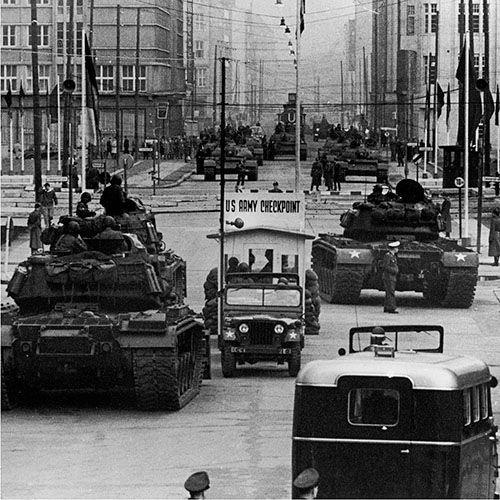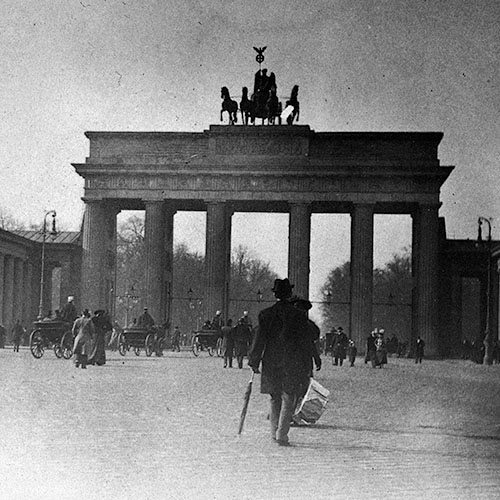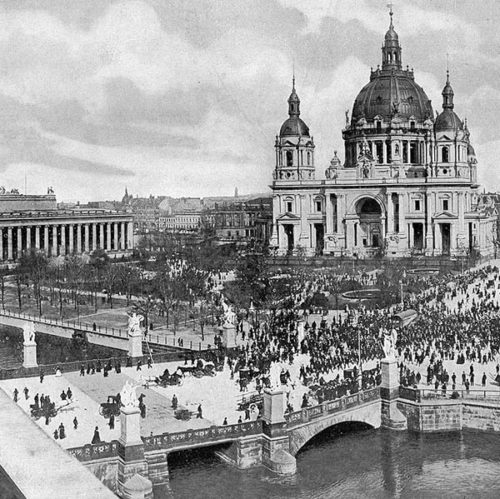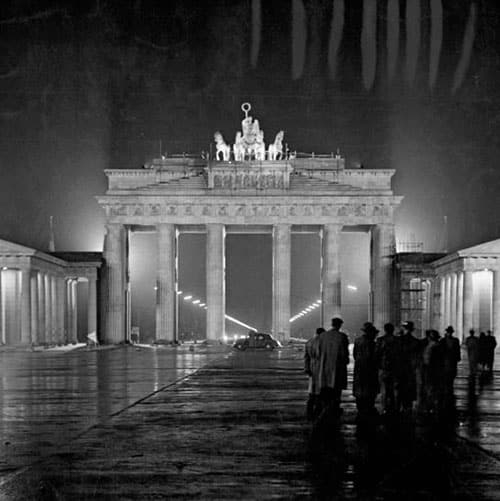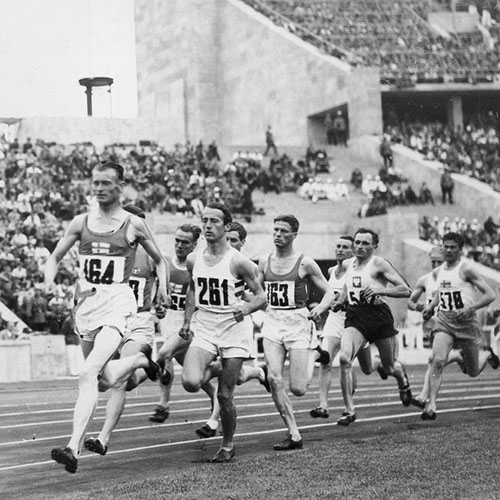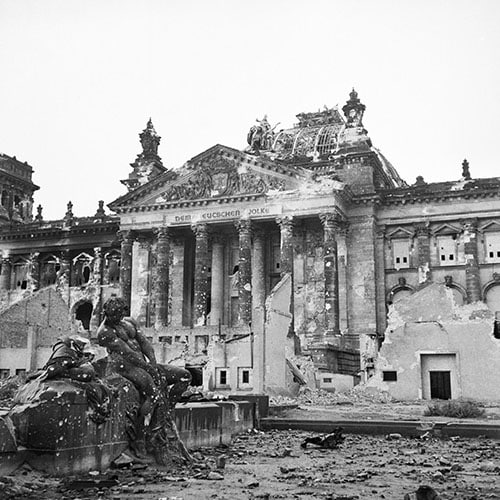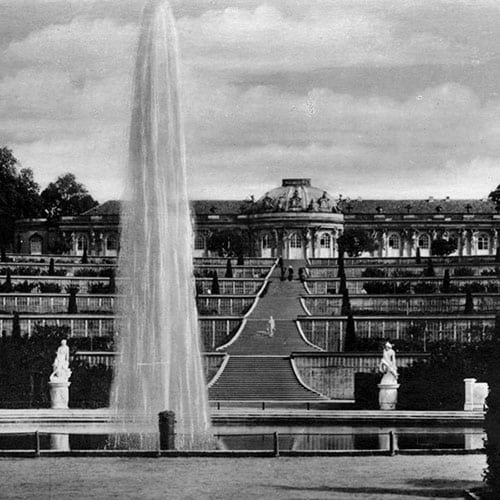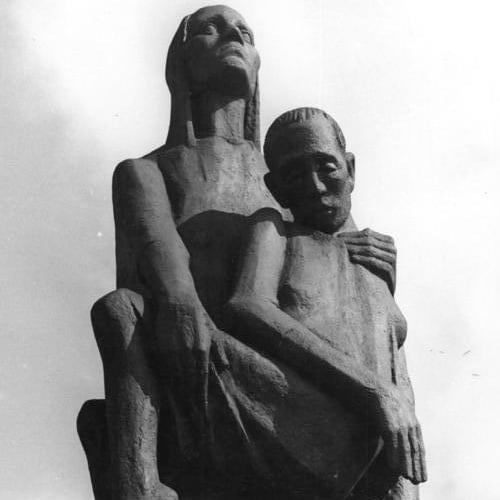“It must appear to be a democratic process, but we must have everything in our hands.” (“Es muss demokratisch aussehen, aber wir müssen alles in der Hand haben.”)
Walter Ulbricht, in a private meeting with party functionaries in 1945
The request came on a mild afternoon in June 1962, a little under a year since the Wall had gone up.
An East Berlin family, living on the ground floor of a building on the western edge of the Soviet sector, had a peculiar problem.
Their beloved cat had discovered the liberating freedom of West Berlin and had taken to hopping the border wall for regular escapades. Getting him back required the undignified process of coaxing and calling, much to the amusement of the French soldiers on the other side. Fed up, the family patriarch formally requested that the People’s Police either shoot the cat or provide him with a long, hooked pole to retrieve the errant feline himself.
The file on the border-violating cat, a genuine artifact from the East German government archives, is a moment of near-farcical bureaucracy in a story defined by its grimness. It is a reminder that while history is written in blood and policy, it is lived in the small, absurd details of daily life.
For every dramatic, heart-stopping escape over the Berlin Wall that made headlines, there were countless other moments—tragic, strange, and even darkly comic—unfolding along a vast and deadly frontier that has been largely overshadowed by its most infamous section.

When we ask how many people died trying to escape East Germany, our minds instinctively conjure images of Berlin. We may picture Peter Fechter bleeding to death a mere stone’s throw from Checkpoint Charlie or Conrad Schumann leaping over a coil of barbed wire in the first days of the city’s more permanent division.
The number often quoted, around 140, feels tangible, a specific human cost for a specific, brutal structure.
But the Berlin Wall was only the final, desperate seal on a leaky container.
It was the visible tip of a monstrous iceberg.
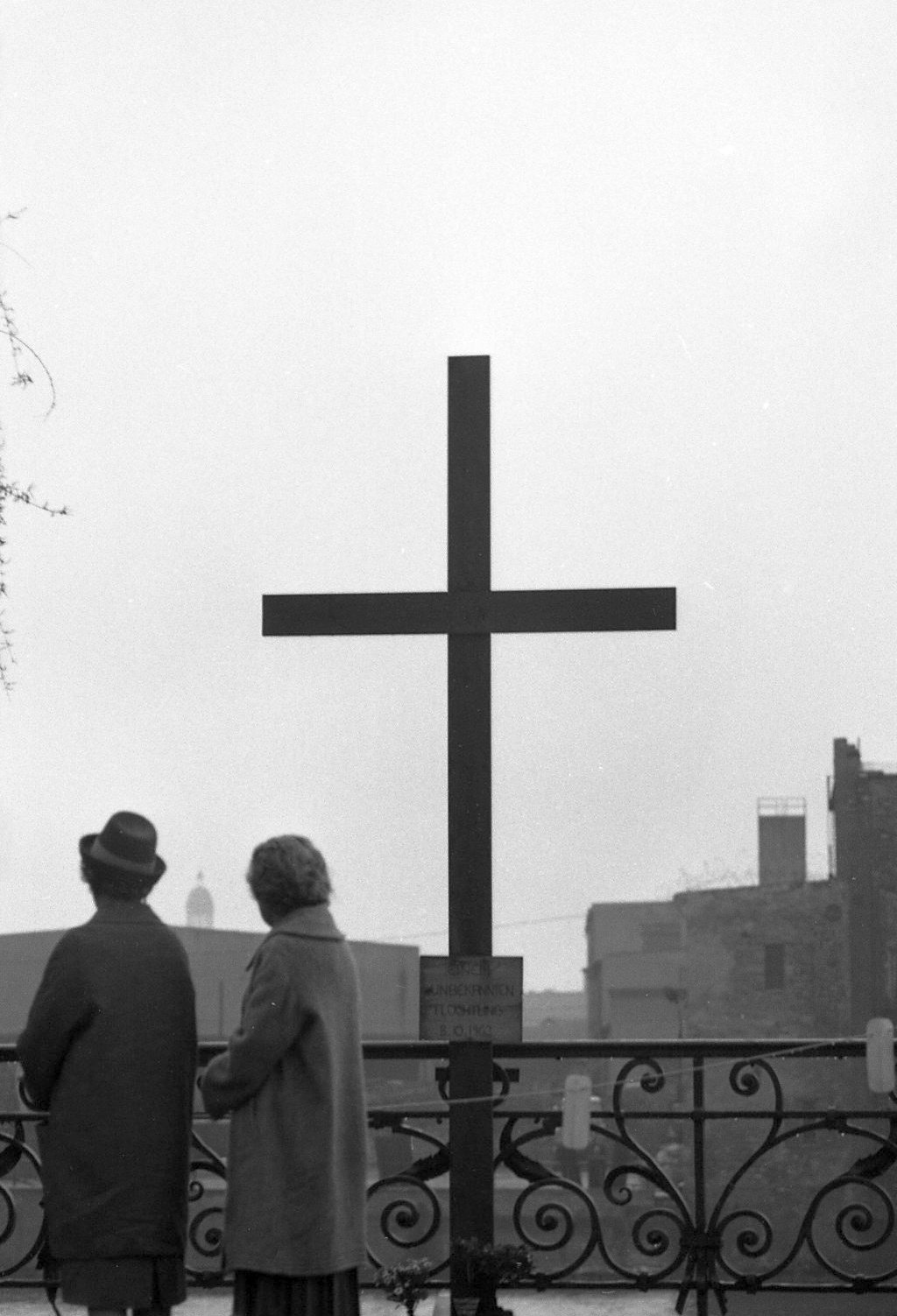
For years before the Wall and all through its existence, the German Democratic Republic (GDR) was killing people not just on the streets of the divided German capital, but across 1,400 kilometers of fortified border stretching from the Baltic Sea to Czechoslovakia. People died in forests, they drowned in rivers, and they vanished into the cold, dark tomb of the Baltic sea.
To truly answer how many died is not as simple a matter as counting bodies in a morgue.
It is an exercise in historical forensics, a process of sifting through propaganda, incomplete records, and the painful silence of forgotten families.
It forces us to ask a more fundamental question: What constitutes a death ‘at the border’?
Is it only the person shot by a guard?
What about the one who suffers a heart attack during a brutal Stasi interrogation at a border crossing? Or the would-be escapee who drowns from exhaustion a mile offshore?
The answer is not a number.
It is a landscape of tragedy, far larger and more complex than the shadow of a single wall.
–
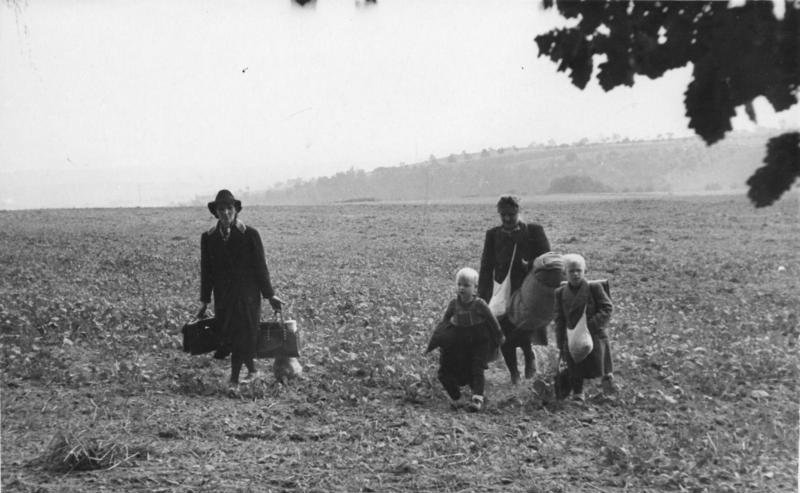
The East German Exodus
“Freedom has many difficulties and democracy is not perfect, but we have never had to put a wall up to keep our people in.”
US President, John F. Kennedy
To understand why a state would build a system designed to kill its own citizens, one must first understand how profoundly that state was failing.
After the defeat of Nazi Germany in 1945, the country was carved into four occupation zones by the victorious Allied powers: American, British, French, and Soviet. This division, intended to be temporary, quickly hardened as the ideological chasm between the Soviet Union and the Western Allies deepened into the Cold War.
In 1949, two separate German states were born.
In the West, the Federal Republic of Germany (FRG) was established as a parliamentary democracy and, fueled by the Marshall Plan, embarked on an ‘economic miracle’ (Wirtschaftswunder).
In the East, the German Democratic Republic (GDR) was formed from the Soviet Occupation Zone. It was, from its inception, a state built on a contradiction. Its official name was democratic, but its reality was a one-party dictatorship controlled by the Socialist Unity Party (SED), which took its orders from Moscow.
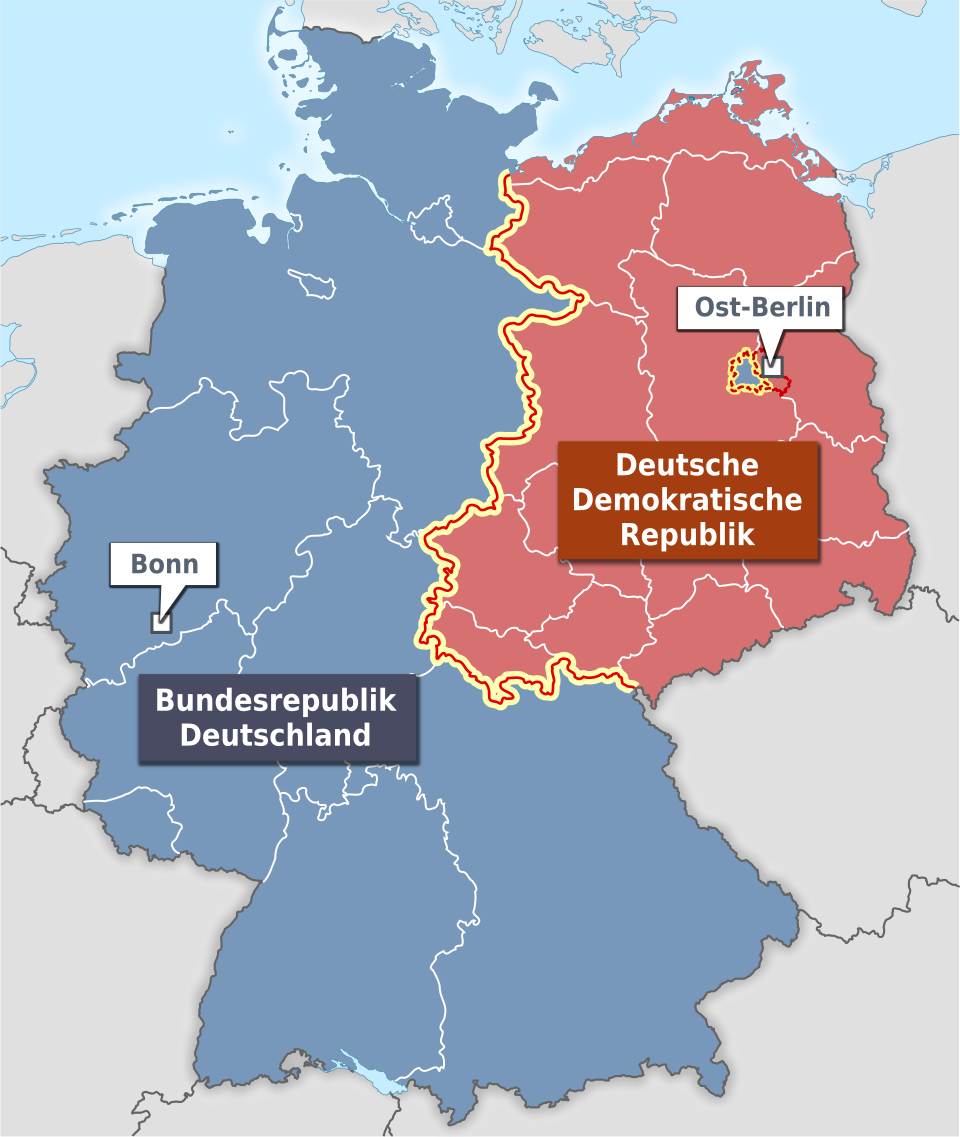
For the citizens of the newly formed GDR, the contrast with the West was stark and immediate.
While West Germany saw rising wages, full shelves, and political freedom, East Germany was beset by war reparations to the Soviet Union, the collectivisation of farms, the nationalisation of industry, and the ever-present surveillance of the Ministry for State Security, the dreaded Stasi.
The result was a mass exodus.
The border between East and West Germany was, in the early years, still relatively permeable.
It was a line on a map, not yet a ‘death strip’.
And people voted with their feet.
Between 1949 and the moment the Berlin Wall was built in 1961, an estimated 2.7 million people fled the GDR. This wasn’t a trickle; it was a hemorrhage of human capital. Nearly one-fifth of East Germany’s population.
Historian Frederick Taylor notes in ‘The Berlin Wall’ that those leaving were often the “young, the energetic, the educated”. They were the engineers, doctors, intellectuals, and skilled workers the fledgling socialist state desperately needed to build its utopian future.
The GDR was, quite literally, losing its future.
The most gaping wound was Berlin.
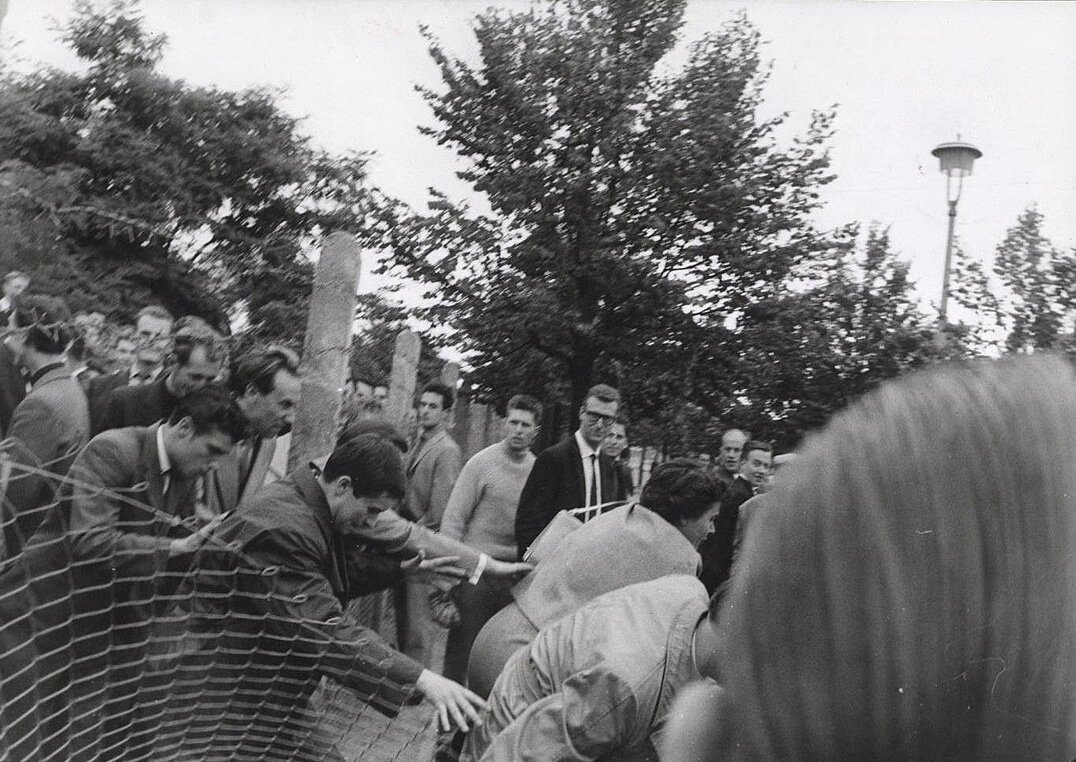
While the rest of the inner-German border was becoming progressively more fortified throughout the 1950s, Berlin remained a bizarre anomaly.
As the city was also divided into four sectors, one could, for the price of a U-Bahn or S-Bahn ticket, travel from the grim realities of East Berlin into the glittering, capitalist showcase of West Berlin. First to admire the ‘shopfront window of the Western world’ and then from there, it was a simple matter to claim refugee status.
Berlin was an ‘escape hatch’, a ‘hole in the Iron Curtain’, and the GDR regime was powerless to stop the flow.
In the final weeks before the border was sealed, a thousand people a day were making the journey. The state was on the brink of collapse. Something, as the Party bosses knew, had to be done.
–
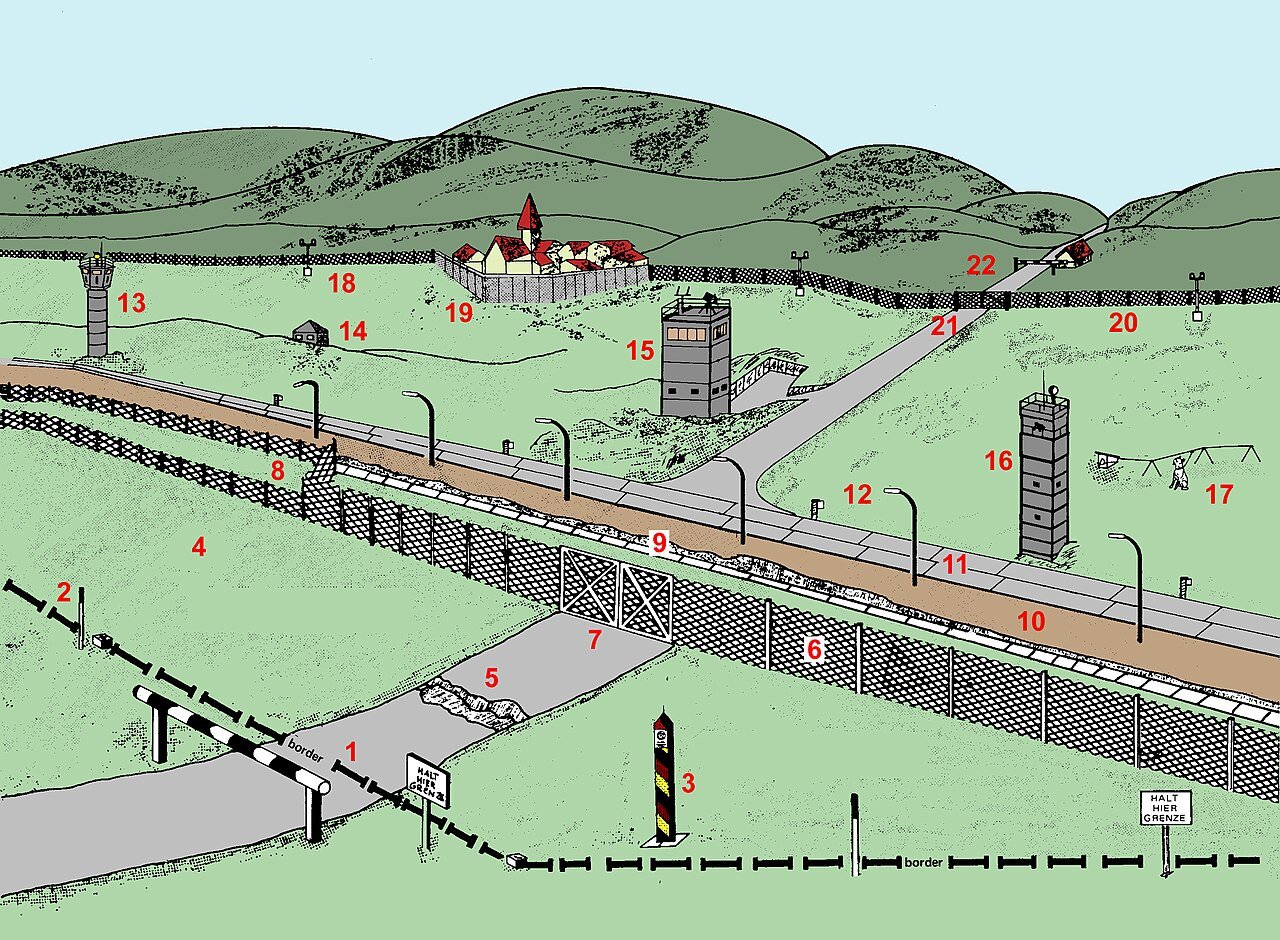
The Iron Curtain & The 'Inner German Border'
“The Zone is, in a very literal sense, a prison, and the price of freedom for those within its walls is sometimes death.”
A 1953 internal report from the U.S. High Commissioner in Germany
Long before the world learned the term ‘Berlin Wall’, there was the ‘innerdeutsche Grenze’, the Inner-German Border.
This was the true front line of the Cold War in Europe, a 1,393km stretch of fortified land that ran from the Baltic coast to the westernmost point of Czechoslovakia.
It was here, in the quiet forests and rolling hills of central Germany, that the GDR first perfected its machinery of frontier control and state-sanctioned murder.
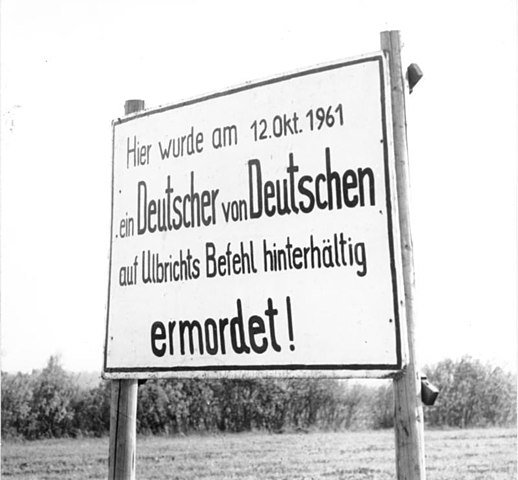
Following a directive in May 1952, the GDR began sealing this border in earnest. The state undertook initially to forcibly relocate families who lived too close to the boundary (a covert program cynically code-named Operation Vermin) – citizens the government dismissively described as “smugglers, money launderers and reactionaries”.
What followed was the construction of a horrifyingly complex and lethal border – that evolved over four decades – the likes of which the world had never seen before. It was not one fence, but a series of them, creating a deep, layered buffer zone euphemistically called the ‘protective strip’ (Schutzstreifen) but known to the West as the ‘death strip’.

To approach the border from the East was to enter a series of graduated zones of control, culminating in this strip, which could be up to 500 meters wide. An escapee would first have to get past a preliminary fence, often miles from the actual border. Then, they would face a patrol road for military vehicles, a line of vicious dog runs with hundreds of chained guard dogs, and rows of anti-vehicle ditches and concrete barricades.
After navigating this, they came to the most terrifying part: the open ground, raked smooth like a sand garden to show footprints, overlooked by hundreds of concrete watchtowers staffed by guards armed with automatic weapons.
Finally, they would reach the primary obstacle: a 3.2-meter-high steel mesh fence, often booby-trapped with one of the most diabolical inventions of the era.

The SM-70 (Splittermine-70) was an anti-personnel mine mounted on the fence posts. Triggered by a tripwire, it would fire a cone of lethal shrapnel parallel to the fence line, designed not to seal the border, but to turn it into a killing machine.
This was the horrifying reality behind the GDR’s official position, stated in a 1974 propaganda pamphlet: “The state border… serves the protection of peace and the reliable defence of our socialist achievements against all attacks from imperialist forces.”
The human cost along this vast border was immense.
For decades, research was difficult, records were sealed, and the dead were often registered by the Stasi as suicides or accidents. After reunification, meticulous work by German historical research groups began to piece together the truth.
Projects like that of the Zentrale Ermittlungsstelle für Regierungs- und Vereinigungskriminalität (Central Investigation Center for Governmental and Unification Crimes) and other academic studies have concluded that the number of deaths on the inner-German border is far higher than on the more famous Berlin Wall.
Current conservative estimates place the number of people who died here at somewhere between 300 and 400.
They died in every conceivable way.

They were shot by guards, blown apart by mines, mauled by dogs, or drowned trying to swim across rivers like the Elbe, which formed part of the border. Unlike in Berlin, where deaths were sometimes witnessed by Western cameras, these were often lonely, desperate acts in remote locations, the victim’s fate unknown to their families for years.
The official GDR order to the guards, the infamous Schießbefehl (order to fire), stated that border violators were to be ‘annihilated’.
In 1966, GDR Defense Minister Heinz Hoffmann bluntly warned that “anyone who does not respect our border will feel the bullet,” and in 1974 party leader Erich Honecker ordered that firearms be used “ruthlessly… in the event of attempts to break through the border”. The East German regime even twisted language to dehumanize would-be escapees: fleeing citizens were labeled “traitors” and Republikflüchtige (deserters), and Western helpers were smeared as Menschenhändler (“human traffickers”). As one 1955 GDR propaganda booklet seethed, “leaving the GDR is an act of political and moral backwardness and depravity”
A young border guard, recalling his training, told historian Christopher Hilton, “We were constantly being told that border-violators were the dregs of humanity. Criminals… You would be a hero if you shot one of them.”
This brutal logic turned German against German and made the silent forests of Thuringia and Saxony-Anhalt one of the deadliest places in Cold War Europe.
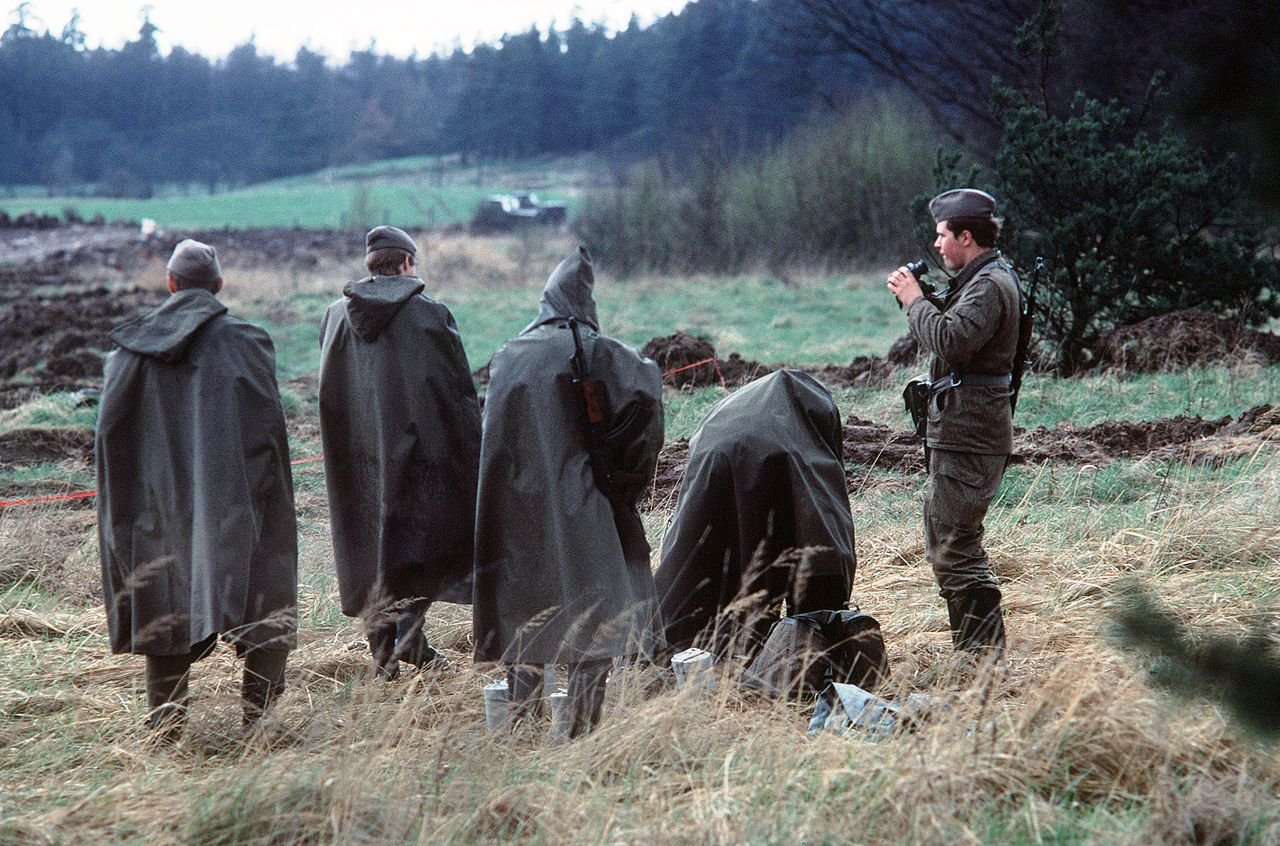
For East Germans bent on escape, the inner German border was a gauntlet of almost superhuman difficulty. Yet miraculously, some succeeded. Under the cover of darkness and fog, a determined few made it across. One famous mass breakout occurred in October 1961 in the village of Böseckendorf: 53 residents – a quarter of the village – slipped away en masse in a single night, evading detection until they all reached West Germany safely.
Another group escape in 1964 saw 14 East Germans, including 11 children, smuggled across the border in a refrigerated truck, hidden under heaps of butchered pigs – a grotesque but effective ruse. More often, though, escapes were solitary affairs.
In one dramatic case in May 1969, an East German border guard NCO decided to make a run for it. As he dashed, a fellow guard named Jürgen Lange took aim – and then deliberately did not shoot. Fearing punishment for sparing his comrade, Lange himself fled to the West a mere ten minutes later.
When he arrived, Lange discovered that the NCO had secretly sabotaged his rifle, ensuring he couldn’t fire in the first place
The East German government’s own statistics (now declassified) reveal how daunting escape had become.
In the late 1970s, for example, nearly 5,000 East Germans attempted to cross the border over a six-year period; fewer than one in twenty succeeded.

The ‘innerdeutsche Grenze’ claimed victims in any way it could.
One East German baby even lost its life during a family’s escape when the anxious parents gave the infant sleeping pills to keep it quiet; the overdose proved fatal.
In October 1961, Kurt Lichtenstein, a West German journalist, was walking near the zonal border hoping to speak with East German farmers, when a border guard’s bullet cut him down.
He was not trying to escape – he was an innocent reporter on the Western side – yet the hyper-tense border guards shot him anyway, later absurdly claiming he was engaged in ‘provocations’.
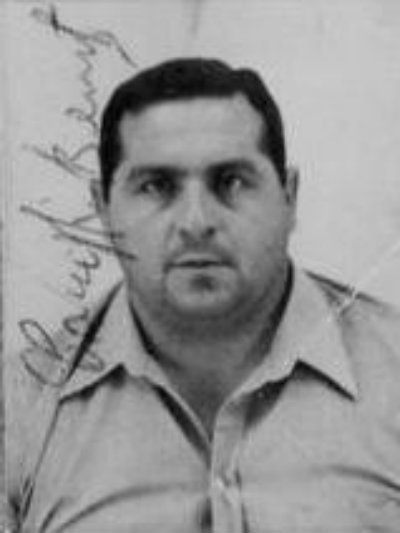
In August 1976, Benito Corghi, an Italian truck driver who regularly delivered goods to West Berlin, met a similar fate. A mix-up with his papers at a checkpoint led him to step out of his truck, and in the confusion an East German guard shot him dead. Corghi was a member of Italy’s Communist Party, ironically a comrade of the East German regime; his death caused an international scandal and even the GDR had to issue a rare apology.
–

The ‘Victims Of The Berlin Wall’
“No one has any intention of building a wall.”
Walter Ulbricht, East German Head of State in East Berlin on June 15th 1961, just two months before the Berlin Wall was erected
While the GDR had successfully sealed its rural frontier in 1952, the state continued to bleed out through the heart of Berlin.
The exodus had become a crisis, threatening the very existence of the GDR.
The absurdity of the situation could not last.
On the night of August 12th-13th 1961, the regime executed ‘Operation Rose’.
Under the watch of armed guards, workers began to tear up streets and erect a barrier of concrete posts and barbed wire, severing the city in a single night. What began as a desperate measure to save the state would become the most potent symbol of the Cold War.
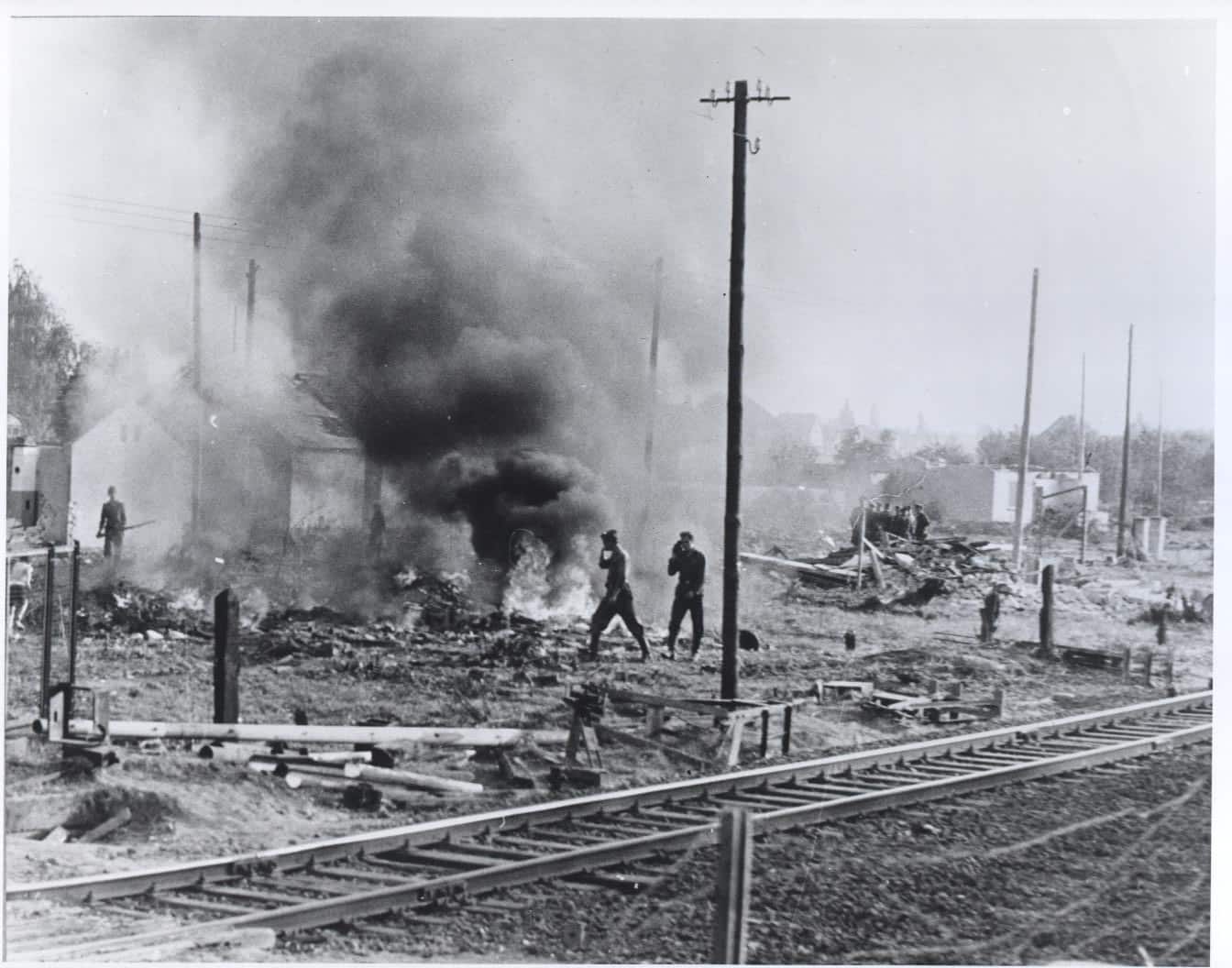
Initially a crude wire fence, the Berlin Wall evolved (some 14 years after its introduction) into the Grenzmauer 75, a sophisticated barrier of smooth, L-shaped concrete segments topped with a pipe to prevent climbing. But crucially, the Wall’s lethality came from the system behind it: the same ‘death strip’ principles from the inner-German border, compressed into a dense urban environment.
Because Berlin was an international stage, the use of mines and automatic firing devices was deemed too politically risky.
The killing was left to the border guards.
The official tally of the victims of the Berlin Wall, meticulously researched after reunification by the Centre for Contemporary History in Potsdam, is 140.
This number includes not only those shot trying to escape, but also people who died as an indirect consequence of the Wall – like Ida Siekmann, who in August 1961 became the Wall’s first casualty after she jumped from her third-story window on Bernauer Straße to escape and died from the injuries. Another woman, Olga Segler, died in similar circumstances from injuries sustained after jumping from her third-floor apartment on the same street to a fire blanket held by West Berliners below.

A breakdown of those 140 victims details 30 bystanders (East or West Germans who were not trying to flee but were nonetheless shot or died in accidents related to the Wall), 1 Soviet soldier, and 8 East German border soldiers killed in the line of duty.
Günter Litfin was the first person to be shot and killed while trying to escape, on August 24th 1961, just days after the border was sealed. He was a tailor who had worked in the West and saw his future vanish overnight. His attempt to swim across a small canal near Berlin’s current Hauptbahnhof ended in a volley of bullets.
Perhaps the most infamous case is that of 18-year-old Peter Fechter in 1962.

After being shot while trying to climb the Wall near Checkpoint Charlie, he fell back into the death strip on the Eastern side. For nearly an hour, he lay bleeding to death, his screams for help audible to helpless Western onlookers, journalists, and soldiers. The East German guards refused to help him, and the American soldiers at the checkpoint were under strict orders not to intervene. His public agony, captured in horrific photographs, exposed the utter barbarity of the system for the entire world to see.

The final victim of gunfire at the Wall was Chris Gueffroy, who on February 5th 1989—a mere nine months before the Wall fell—was shot and killed trying to cross into West Berlin.
He and a friend had mistakenly believed the order to shoot had been lifted.
His death served as a tragic, final testament to the regime’s inflexibility, even on the eve of its own collapse.
The 140 deaths in Berlin are the most well-documented and are rightly memorialised. But to accept this figure as the total cost of the GDR’s escape policy is to ignore the far vaster, lonelier killing fields that stretched for hundreds of kilometers beyond the city limits.
–
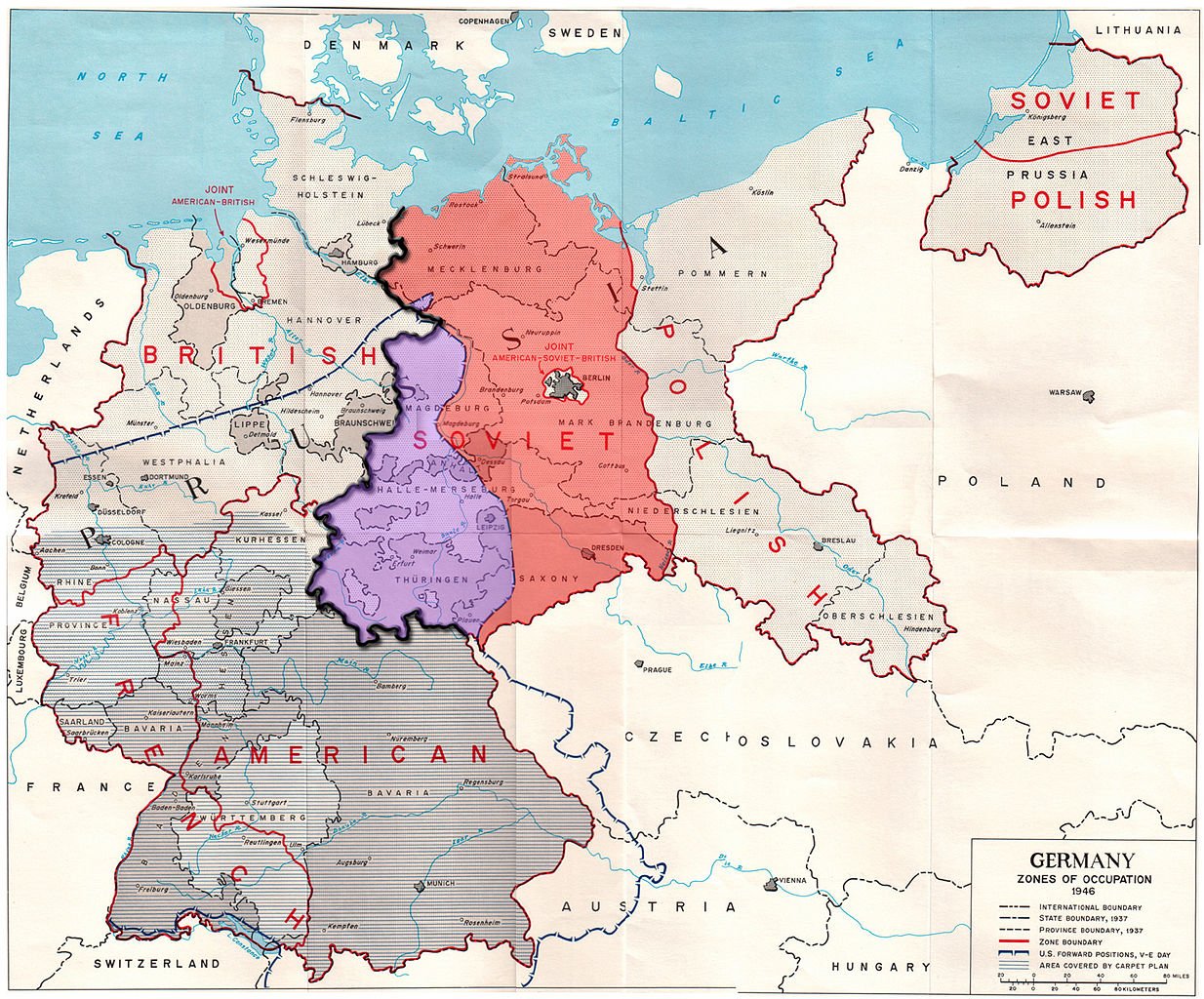
The Third Frontier & ‘Unfortunate Accidents’
“Every centimetre of our state border must be a barrier to the enemies of our worker-and-peasant power.”
From a 1974 GDR Ministry of Defence training manual for border troops
Beyond the steel and concrete of the land borders lay a third frontier: the cold, treacherous expanse of the Baltic Sea (Ostsee).
To the holidaymakers who crowded its sandy beaches, the Baltic was a place of recreation.
To the GDR state, it was a liquid border, and it was guarded as jealously as any fence. For hundreds of would-be escapees, it was a final, desperate gamble for freedom.
The regime went to extraordinary lengths to secure its coastline.
Across the Baltic waters lay Denmark to the northwest and the West German state of Schleswig-Holstein to the west. Powerful searchlights swept the water at night, watchtowers dotted the shoreline, and special boat units of the Border Troops patrolled the seas.
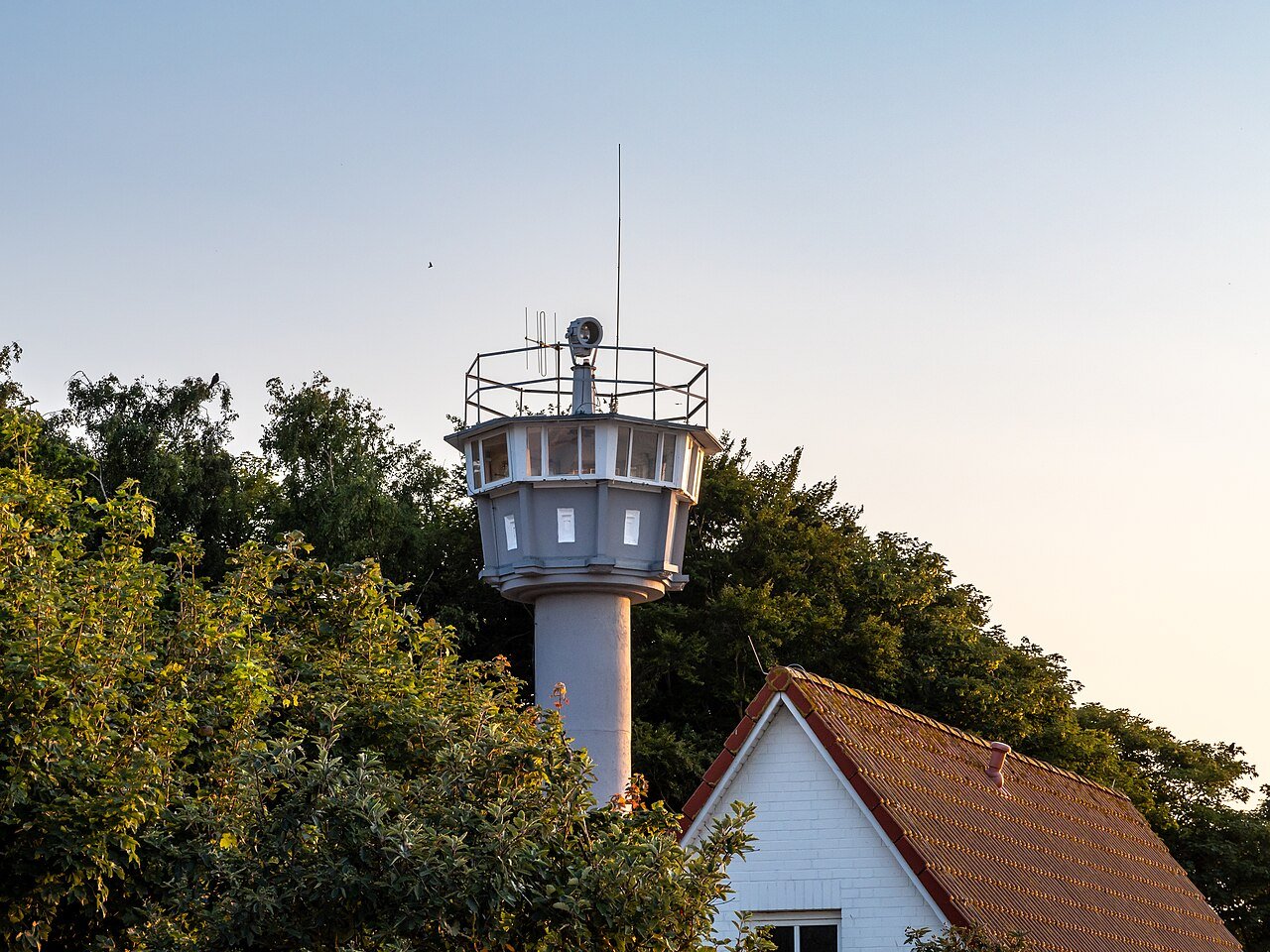
The Stasi actively recruited a network of unofficial informers—hotel workers, fishermen, even lighthouse keepers—to report any suspicious activity. Preparing for an escape was a crime in itself, so simply owning a kayak or an inflatable boat in a coastal area could bring you under suspicion.
Despite the dangers, the methods of escape were ingenious and often desperate.
People tried to swim the 40km to the Danish island of Falster, a feat of endurance few could manage in the lethally cold water. Others used modified surfboards, air mattresses, inflatable dinghies, kayaks, makeshift rafts, even stolen paddleboats from resorts.
Manfred Burmeister, an engineer, built an ‘underwater scooter’ out of a salvaged moped motor and a metal barrel – essentially a one-man torpedo that pulled him beneath the waves. In October 1969, he successfully used it to drag himself out to a Danish lightship, undetected by East German patrols.
In 1971, Dr. Peter Döbler, a physician and strong swimmer, smeared himself in goose fat and swam an incredible 45km from the East German coast to the West German island of Fehmarn, a marathon 24-hour swim through cold, turbulent water.
In 1986, two East Berliners, Karsten Klünder and Dirk Deckert, windsurfed into the stormy sea off the island of Hiddensee. Separated by gale-force winds, one miraculously made landfall on a Danish island while the other was rescued by a Danish fishing boat after more than a day adrift.

One of the most famous escapes was that of a family who, in 1978, flew over the border in a homemade hot-air balloon.
But many were not so lucky.
The sea was an unforgiving accomplice to the East German state.
Storms, currents, and above all, hypothermia, claimed countless lives.
Unlike the land border, where evidence of a death was often clear, the Baltic simply swallowed its victims. Bodies washed ashore weeks or months later, sometimes in Denmark or Sweden, sometimes back on the GDR coast, their stories and identities often lost forever.
The most tragic single episode along the Baltic frontier, however, did not involve a shootout or a storm, but a quiet disappearance.
On the night of September 10th 1979, two young East German couples – Ulf and Renate, Lutz and Manuela – along with Ines, the two-year-old daughter of one couple, embarked on a small boat from the coast of Rügen (a Baltic island). They hoped to reach freedom by sea but were never seen alive again. Their fragile boat likely overturned or was swamped by waves outside a campground at Nonnevitz on Rügen’s coast. It was the largest loss of life in a single escape attempt in GDR history – five lives lost in one night – yet the incident was hushed up and remained virtually unknown for decades. Only after reunification did relatives learn the scant details: this family and their friends had been so desperate to leave that they risked a toddler’s life on an open sea.
Documenting these deaths is the most challenging task for historians.
The research group at the Free University of Berlin has conservatively confirmed at least 174 deaths in the Baltic Sea related to escape attempts.
This number, however, is almost certainly an underestimate. Many people who vanished and were presumed to have drowned were simply logged as ‘missing’ by the GDR authorities. The GDR quietly referred to many drowning victims as ‘Unglücksfall’ (unfortunate accidents) in internal reports, without admitting the context.
Danish fishermen in the 1970s occasionally found corpses in their nets – rumored to be East German would-be refugees. In Denmark’s Bispebjerg Cemetery, local lore holds that a dozen unidentified East German refugees who washed ashore are buried in one corner, though records are scant.
Nature itself concealed many of the deaths – no dramatic martyrdom, just a boat that never arrived, a swimmer who vanished beneath the waves.
The sea holds its secrets close, and the true toll is undoubtedly much higher than will be ever known.
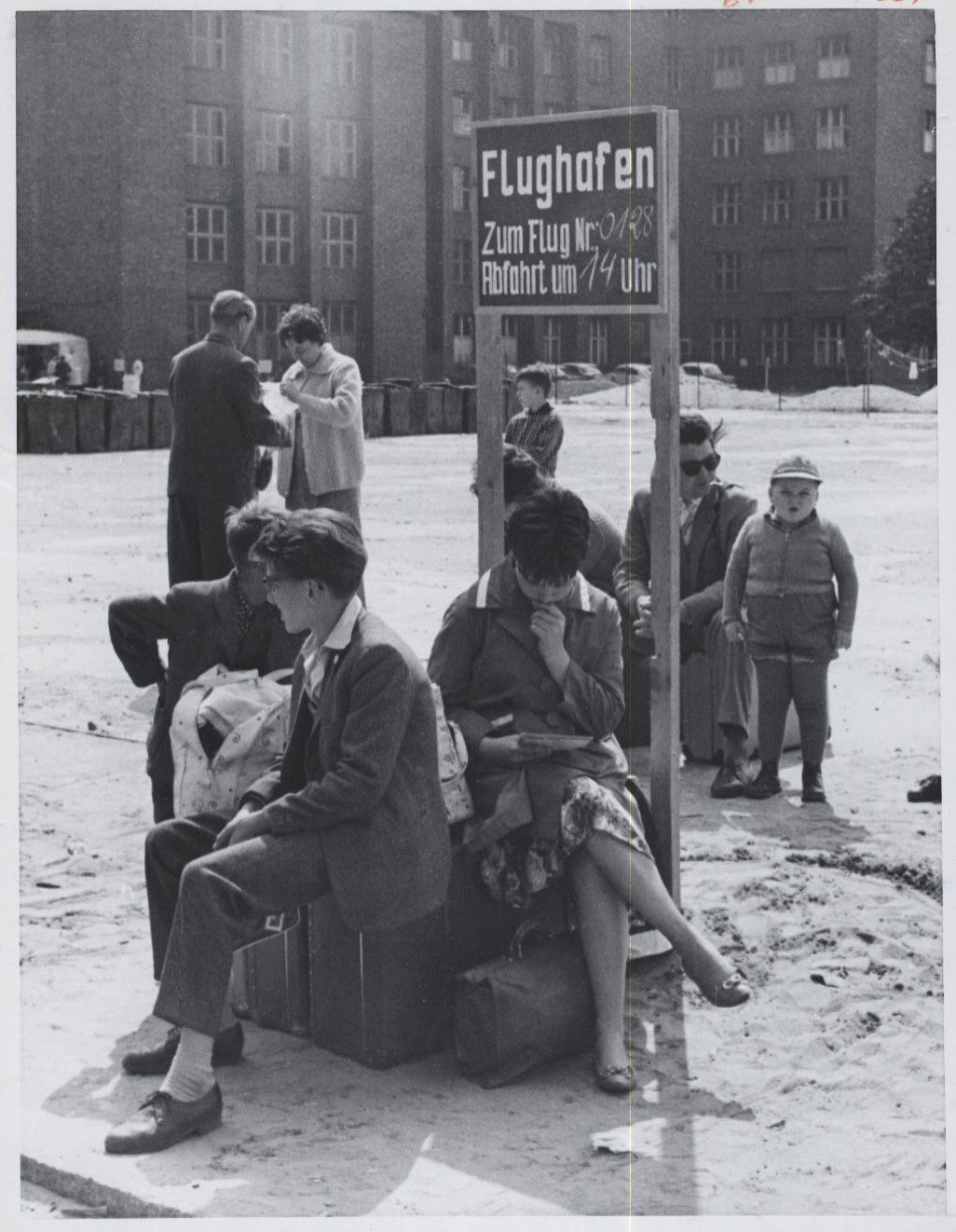
Beyond the Baltic coast, many East Germans also attempted other unconventional escape routes that defy easy categorisation – and some resulted in fatalities.
A handful sought asylum in foreign embassies (one East German was shot by GDR police in 1984 while trying to rush into the West German embassy in Prague). Others fled during allowed trips to Eastern Bloc countries – for instance, slipping across the border from Hungary into Austria (no East Germans were shot there, but some were injured before Hungary opened its border in 1989), or, more perilously, trying to cross from Bulgaria into Greece or Turkey.
Years later, astonishing revelations emerged that Bulgarian border troops had shot and killed numerous East Germans who attempted to escape via Bulgaria’s borders to the West in the 1970s and 1980s. One German historian estimated that up to several hundred East Germans may have died on the Balkan escape routes, an exceedingly high number that is still being investigated and remains controversial.

This is where the entire question of numbers becomes deeply complex.
What is a “border death”?
Consider Captain Heinz Jercha, a West Berlin police officer, who in 1962 was shot by East German transport police while trying to rescue a boy drifting in the Spree; Jercha wasn’t escaping from anywhere, but he became a victim of the border’s cruel logic.
Consider a Stasi informant who, racked with guilt over betraying a friend who was subsequently killed trying to escape, commits suicide. Or an elderly couple who, denied permission to visit their family in the West, drive their car into a river in a shared suicide – some literally died of grief, never to see their loved ones again.
It’s recorded that at least 251 travellers – people going through East Berlin’s checkpoints – died of health emergencies (heart attacks, stress) during or just after inspection, though these are not typically counted as ‘victims of the Berlin Wall’ in the narrow sense.
In fact, over 5,000 East German border guards attempted to flee to the West; about half succeeded and the rest were caught and punished severely – the prison guards ironically becoming the prison escapees.
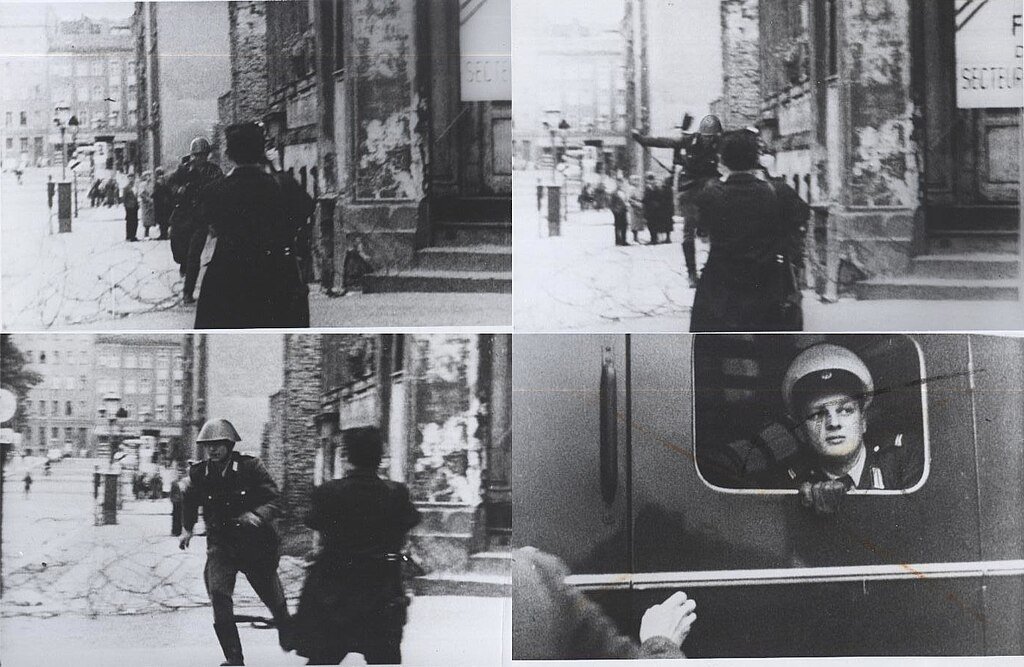
The official projects rightly focus on deaths caused directly by the border regime’s violence or fortifications. But this precise definition excludes many tragic cases – deaths that are a direct consequence of the repressive state and its border, but do not fit the narrow, forensic definition of a death ‘at the Wall’.
If one includes these more broadly defined cases—suicides, deaths during interrogation, stress-induced heart attacks at checkpoints—the estimated total number of victims of the GDR border regime rises significantly.
–

Conclusion
“The border was not just a line on a map; it was the place where the system revealed its true face.”
Hubertus Knabe, German historian and former director of the Berlin-Hohenschönhausen Memorial
So, how many people died trying to escape East Germany?
The answer is not the simple ‘140’ that is so often associated with the Berlin Wall.
That number, while historically verified for Berlin itself, represents only a small piece of a much larger and more brutal truth.
When we look beyond the iconic imagery of Berlin, the true scale of the tragedy comes into focus. We must add the nearly 400 people killed along the vast inner-German border—shot, blown up by mines, or drowned in border rivers. To that, we must add the almost 200 confirmed dead who were lost to the cold expanse of the Baltic Sea, a figure that is undoubtedly an undercount.
A conservative, forensically supported estimate would place the number of people who died trying to cross the GDR’s borders at around 600.
However, broader academic studies that include deaths from failed escapes, suicides prompted by the border, and other related incidents suggest the total human cost could be well over 1,000 people.
The myth of a single, countable number persists because the Berlin Wall was a powerful and televisual symbol. Its fall was a moment of pure, unadulterated joy for many East Germans that created a clean historical narrative. But the reality of the GDR border system was far messier. It was a vast, sprawling apparatus of control that stretched for nearly a thousand miles, claiming victims in quiet forests and on dark seas, far from the glare of international news cameras.
Each death, whether from a bullet in Berlin, a mine in Thuringia, or the freezing waters of the Baltic, was the end point of a state policy designed to cage its own people.
***
If you’ve enjoyed reading this article, consider booking one of our private guided tours of Berlin.
Bibliography
Fulbrook, Mary (1995), Anatomy of a Dictatorship: Inside the GDR 1949–1989, Oxford University Press
Funder, Anna (2003), Stasiland: Stories from Behind the Berlin Wall, Granta Books
Hertle, Hans-Hermann, and Nooke, Maria (2011), The Deaths at the Berlin Wall 1961–1989: A Biographical Handbook, Ch. Links Verlag
Hilton, Christopher (2011), The Wall: The People’s Story, The History Press
Kaminsky, Annette (ed.) (2016), Orte des Erinnerns: Gedenkzeichen, Gedenkstätten und Museen zur Diktatur in SBZ und DDR, Ch. Links Verlag
Lapp, Peter Joachim (2013), Grenzregime der DDR, Helios
MacGregor, Iain (2020), Checkpoint Charlie: The Cold War, The Berlin Wall and the Most Dangerous Place on Earth, Constable
Merriman, Helena (2021), Tunnel 29, Hodder & Stoughton
Schröder, Klaus (2013), Der SED-Staat: Geschichte und Strukturen der DDR, Verlag C.H. Beck
Taylor, Frederick (2006), The Berlin Wall: A World Divided, 1961–1989, HarperCollins
HISTORICAL ARTICLES
Mythbusting Berlin
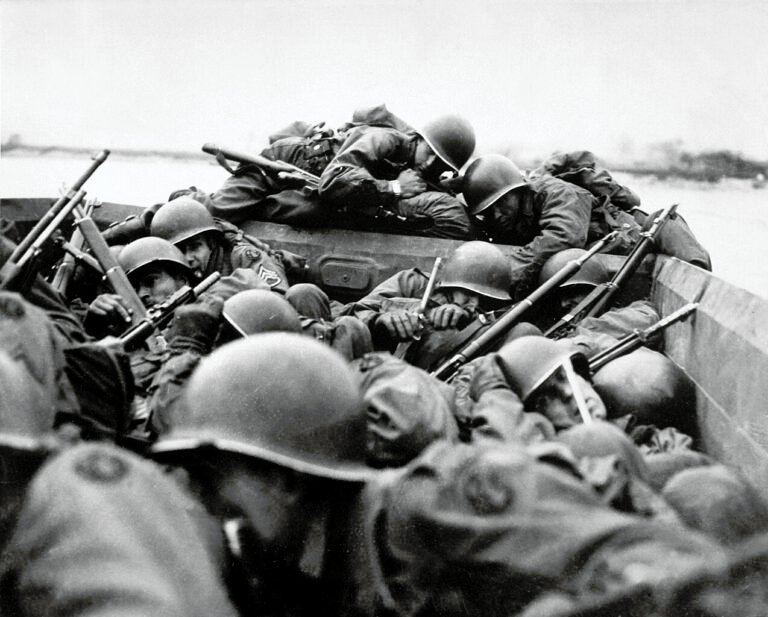
Could The Western Allies Have Captured Berlin? – Mythbusting Berlin
To contemplate a Western Allied capture of Berlin in 1945 is to challenge the established endgame of the Second World War. What was the true military and logistical feasibility of a Western Allied assault on the Nazi capital? What factors truly sealed Berlin’s fate, and what might have changed had the Allies pushed eastward?
Answering these questions means delving into the complex interplay of logistics, political maneuvering, and the competing visions for a post-war world
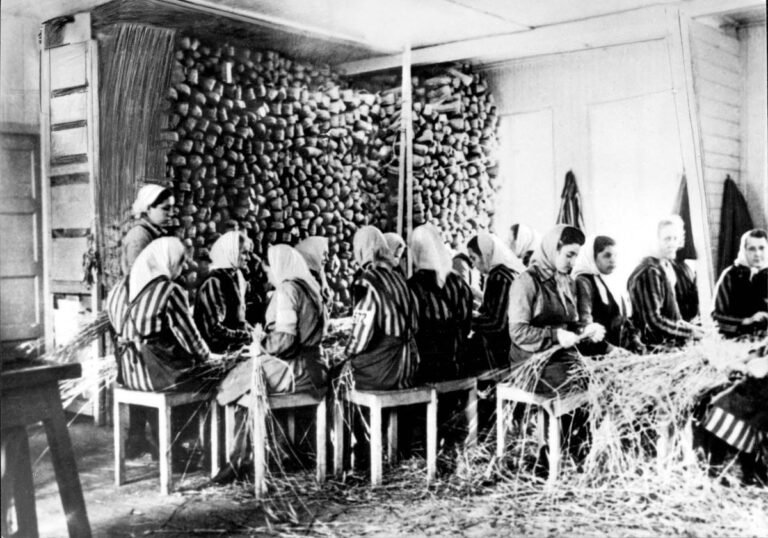
Did Any Of The Rothschild Dynasty Die In The Holocaust? – Mythbusting Berlin
The Rothschild name is synonymous with immense wealth, influence, and persistent conspiracy theories—especially during the era of Nazi Germany. Often targeted by antisemitic propaganda, the family’s survival during World War II has sparked myths about their supposed immunity from Nazi persecution. But did any Rothschild family member actually perish in the Holocaust? This article explores that compelling question, unraveling historical misconceptions and revealing the reality behind one of Europe’s most famous dynasties.
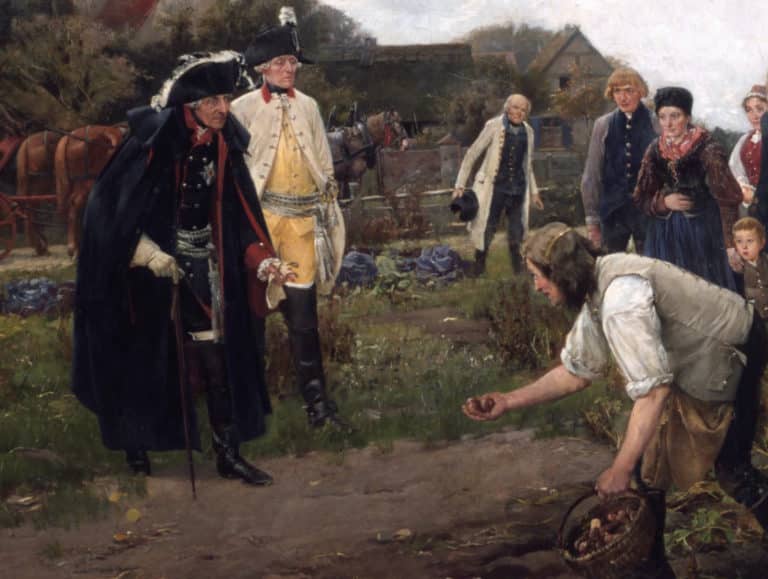
Did Frederick The Great Introduce The Potato To Germany? – Mythbusting Berlin
One of the more bizarre claims to fame attributed to the first King of Prussia is that the man who would go down in history known as Frederick the Great introduced the potato to Germany during his reign back in the 1700s. This starchy root vegetable has undoubtedly become a staple part of German cuisine – an essential addition to any plate of Schnitzel, Schweinshaxn, and Königsberger Klopse – however, whether Frederick the Great is
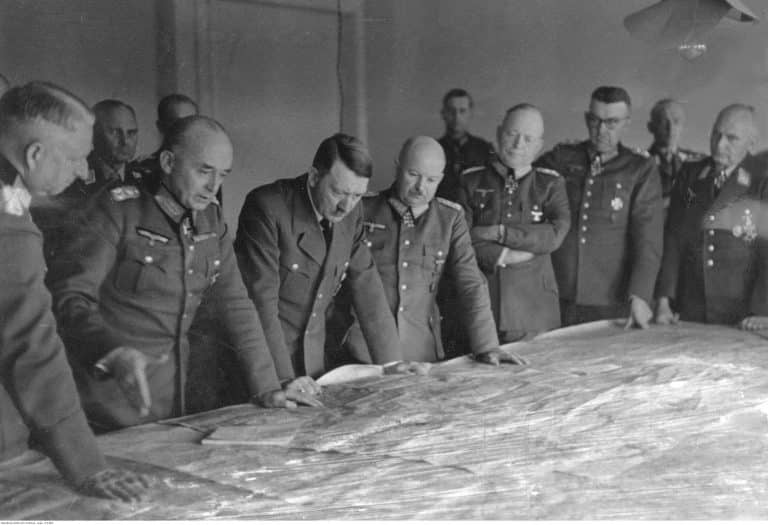
Did Hitler Escape To Argentina In 1945? – Mythbusting Berlin
Although Nazi leader, Adolf Hitler, certainly remains an inescapable figure, could there be any truth to the story of his escape to Argentina in 1945? That the most wanted man on earth could simply vanish, to spend the rest of his life peacefully in South American obscurity captivates imaginations. Yet, despite numerous investigations, this tale persists primarily as myth—fueled by speculation, hearsay, and conspiracy theories.
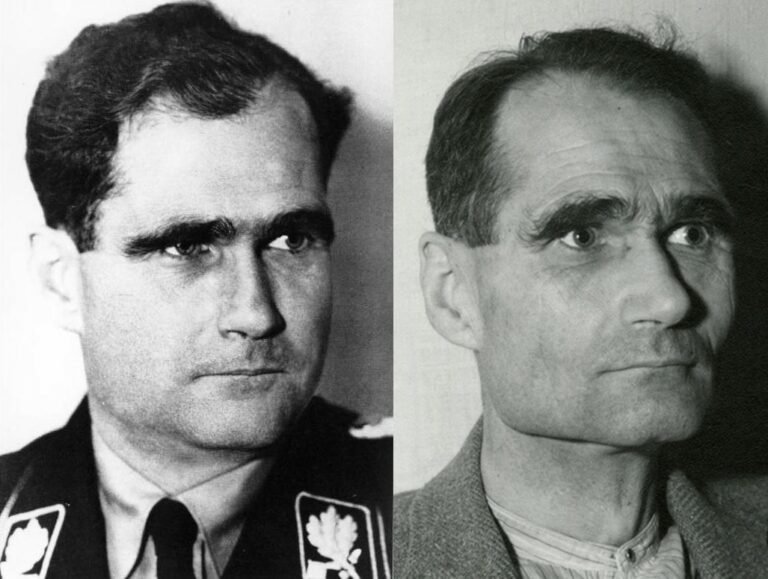
Did Rudolf Hess Really Commit Suicide? – Mythbusting Berlin
On a summer’s day in 1987, the last Nazi war criminal of the Nuremberg trials was found dead in a prison built for hundreds, yet for two decades, housed only him. The official verdict was suicide, a straightforward end to a life defined by fanaticism, delusion, and contradiction.
But the simplicity of the report belied the complexity of the man and the 46 years he had spent in Allied custody. In the meticulously controlled
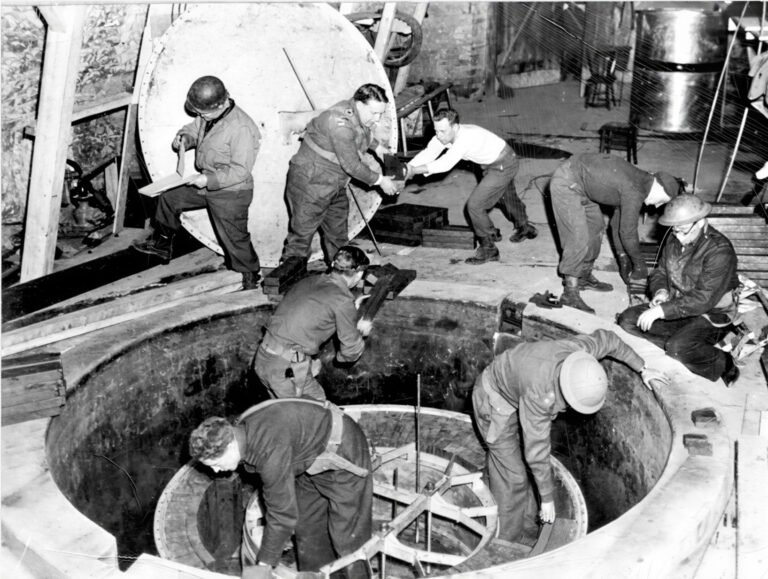
Did The Nazis Develop Nuclear Weapons? – Mythbusting Berlin
The Nazi obsession with super-weapons became so serious in the closing stages of the Second World that Adolf Hitler personally believed that such ‘Wunderwaffen’ both existed in a usable form – and would save the country from defeat. Had the Nazis managed to develop nuclear weapons by 1945 – the outcome of the war would surely have been different. But how close were Hitler, Himmler, and his henchmen to developing an A-bomb?

Did The Nazis Invent Decaf Coffee? – Mythbusting Berlin
Persistent rumors claim that Nazis preferred their coffee anything but pure, leading some to wonder if they might have influenced the development of decaffeinated coffee. Although decaf was already widely available across Europe by the mid-20th century, speculation continues: could the Nazis really have played a role in popularizing—or even discovering—this caffeine-free alternative, or is this simply another caffeinated conspiracy cooked up to sensationalize an ordinary historical detail?

Did The Nazis Invent The Bicycle Reflector? – Mythbusting Berlin
The fruits of wartime ingenuity are plenty – so many, in-fact, that it has become somewhat of a worn cliche that as the guns start firing the innovators get to work, often solving problems while providing more problems for the enemy to overcome.The kind of progress that results in the production of newer improved, more lethal weapons, such as to increase the chances of victory.
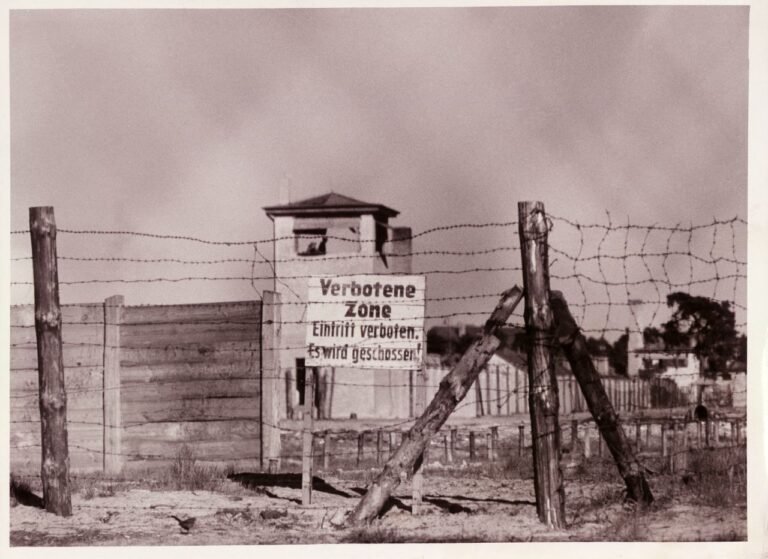
Did The Nazis Run The Largest Counterfeiting Operation In History – Mythbusting Berlin
During the Second World War the Nazis masterminded an astonishing plot to destabilise Britain by flooding its economy with counterfeit banknotes. Crafted in secret by concentration camp prisoners, this forged fortune became the most ambitious counterfeiting operation ever attempted. But was it history’s largest? Dive into the extraordinary tale of Operation Bernhard,
rife with deception, survival, and intrigue—revealing the truth behind one of the Third Reich’s most audacious schemes and its surprising legacy.
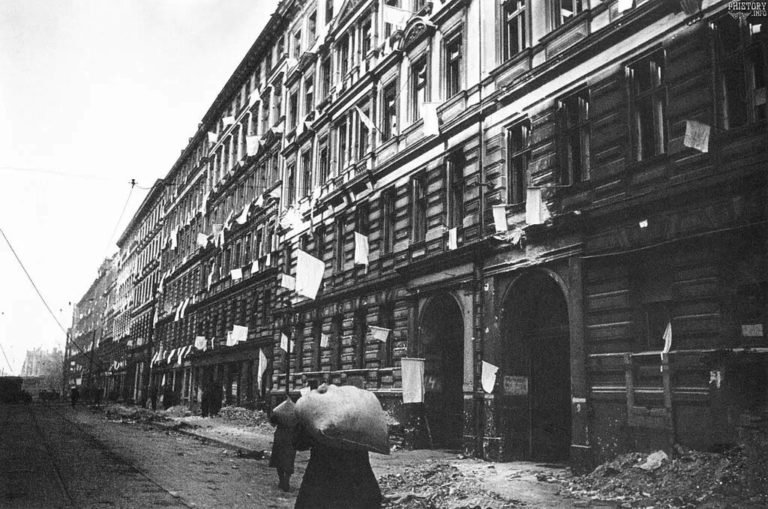
Did The Second World War End In Berlin? – Mythbusting Berlin
When is a war ever truly over? When the last shot is fired in anger would seem like the best measure. Rarely, though, is it possible to gain insight into such a moment.
Remarkably, a record still exists of such a moment at the end of the First World War on the Western Front. A seismic register and recording of the last belching battery of British guns firing artillery across no-man’s-land, followed by a profound
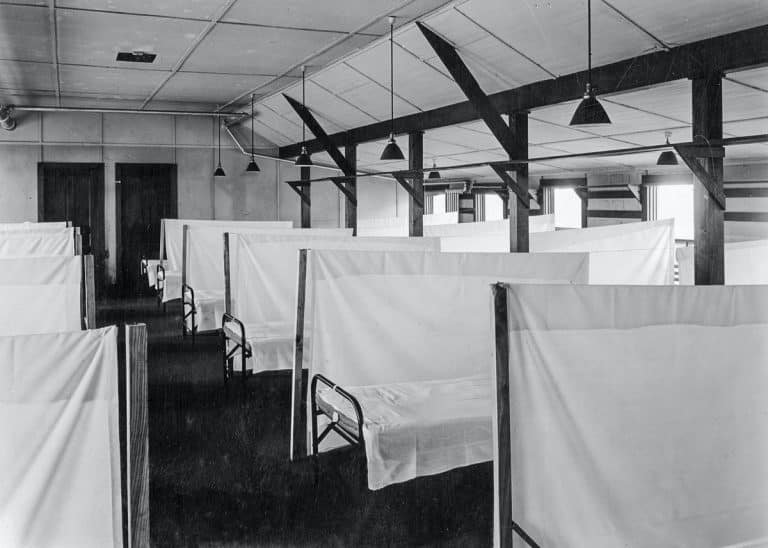
Did The Spanish Flu Pandemic Help The Nazis Take Power? – Mythbusting Berlin
The devastating Spanish Flu pandemic of 1918-1919 struck amid Germany’s post-war turmoil, compounding social instability, economic hardship, and widespread political disillusionment. Could this catastrophic health crisis have indirectly paved the way for Nazi ascension? While often overshadowed by war and revolution, the pandemic’s profound psychological and societal impacts arguably contributed to the perfect storm, enabling extremist ideologies—including Nazism—to gain popularity and ultimately seize power in a fractured Germany.

How Many Assassination Attempts On Adolf Hitler Were There? – Mythbusting Berlin
Nazi leader, Adolf Hitler, projected an aura of invincibility, a man of destiny shielded by providence. But behind the carefully constructed image of the untouchable Führer lies a story of constant threat, of bombs that failed to detonate, and errant bullets that missed their mark. Unearth the hidden history of the numerous attempts on Hitler’s life as we explore the courage of those who tried to change the course of history and the devil’s luck
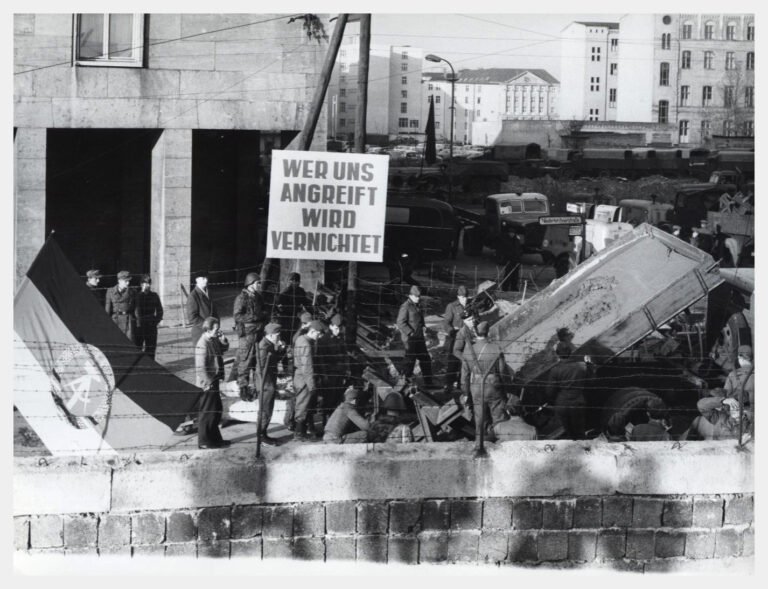
How Many People Died Trying To Escape East Germany? – Mythbusting Berlin
The image of the Berlin Wall is seared into our collective memory, a concrete symbol of Cold War oppression. We think of the daring escapes and the tragic deaths of those who failed. But that well-known number is only a fraction of the truth. The story of those who died trying to escape East Germany is far broader and more complex than most imagine, stretching along a thousand-kilometer border and out into the cold waters
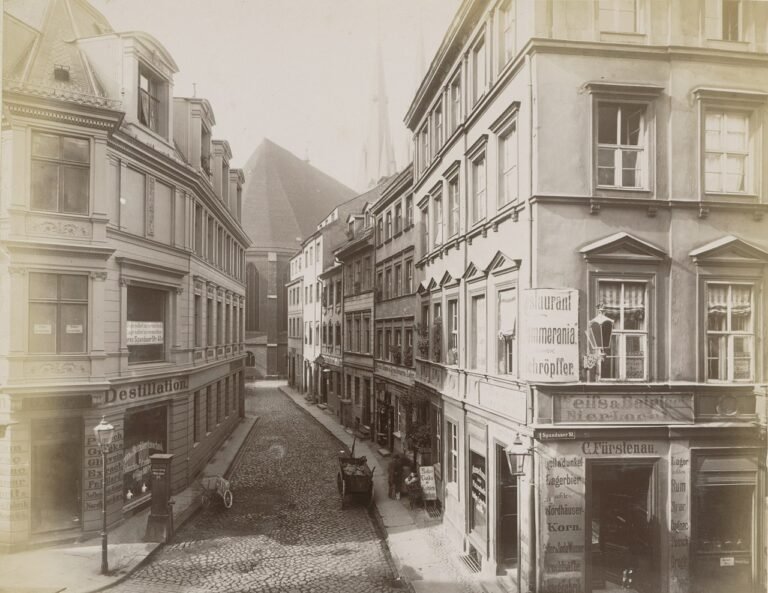
How Old Is Berlin? – Mythbusting Berlin
A relatively new arrival in Europe, Berlin is over 1000 years younger than London, nevermind Rome or Athens, Jerusalem or Jericho. Just how old is Berlin though?
A question fraught with false assumptions and distortions – that has more often than not been answered with propaganda as it has with the cold hard truth.
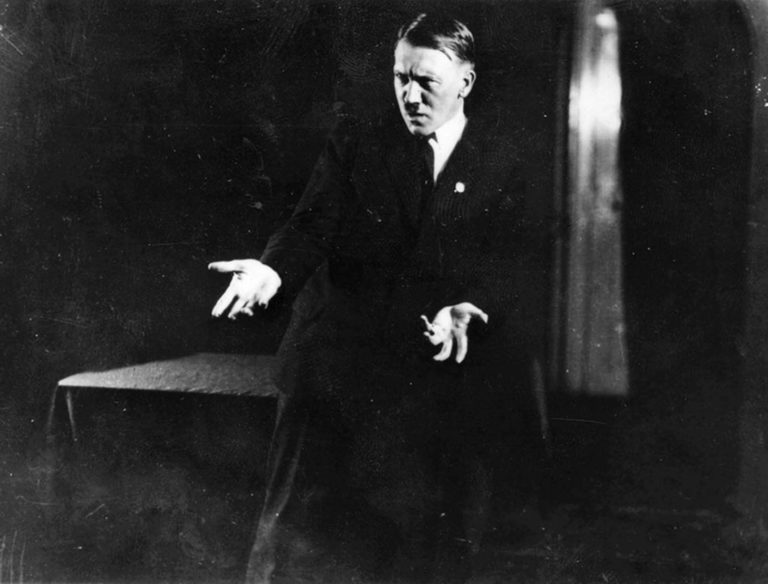
Was Adolf Hitler A Drug Addict? – Mythbusting Berlin
Solving the enigma of the ‘Führer’ has become a preoccupation for many, since the arrival of the Austrian-German onto the world stage – although moving beyond the mythology without falling into the trap of prejudically extrapolating on the psychopathography of Hitler or demonising so as to excuse his actions has proven problematic. What to make of the man who became more than the sum of his masks? The painter; the military dilettante, the mass murderer,

Was Adolf Hitler Gay? – Mythbusting Berlin
In the shadowy corridors of Third Reich history, few questions provoke as much tabloid curiosity and scholarly exasperation as the sexuality of Adolf Hitler. For decades, rumors have swirled—whispered by political enemies in 1930s Munich, psychoanalyzed by American spies in the 1940s, and sensationalized by revisionist authors today. Was the dictator who condemned thousands of men to concentration camps for “deviant” behavior hiding a secret of his own? By peeling back the layers of propaganda,
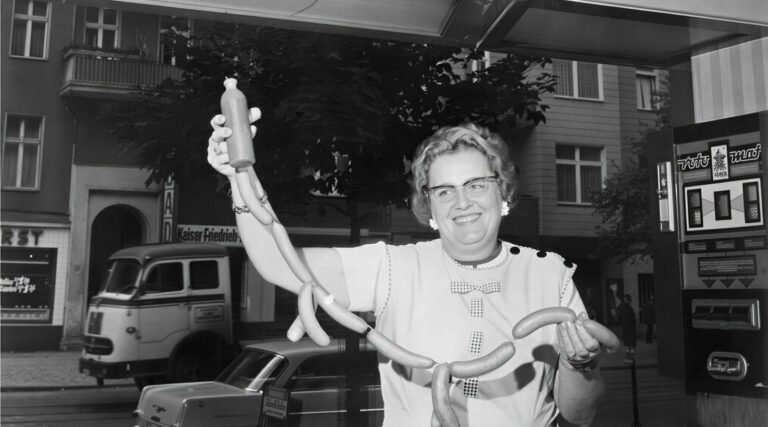
Was Currywurst Invented In Berlin? – Mythbusting Berlin
Explore the story behind what many consider Berlin’s most iconic snack—the ever-so-humble Currywurst. Often hailed as an enduring symbol of culinary creativity amid Cold War scarcity, this humble dish has inspired fierce debate about its true origin. But was it genuinely invented here in Berlin, or have proud locals simply adopted and elevated this spicy street-food favorite into legendary status all their own?

Was Fanta Invented By The Nazis? – Mythbusting Berlin
As one of the most secretive organisations in the world, the Coca Cola corporation refuses to share its secret recipe with anyone. Famously insisting only on shipping the base syrup of its drinks to plants around the world to be carbonated and distributed.
This combined with the trade limitations of the Second World War may have led to the introduction of one of the most popular soft-drinks in the world. But could it be true:
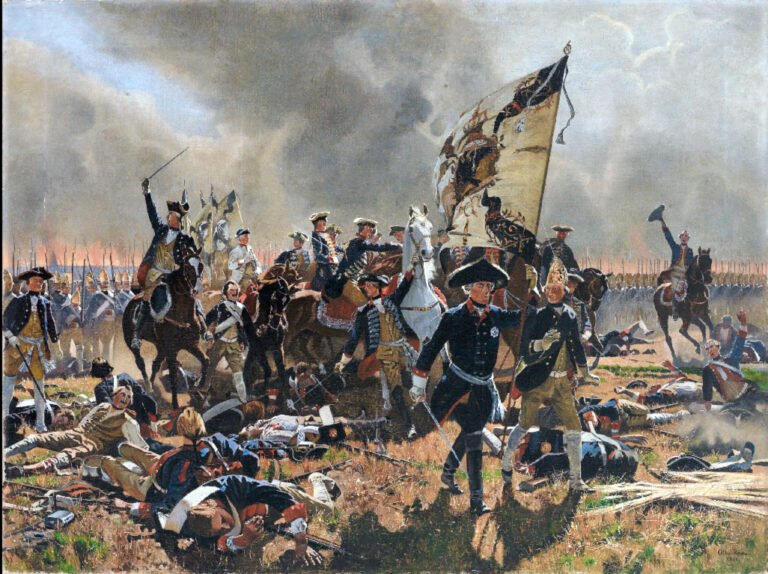
Was Frederick The Great Gay? – Mythbusting Berlin
Frederick II of Prussia, better known as Frederick the Great, is often remembered as the archetypal enlightened monarch – a brilliant military commander, patron of the arts, and learned philosopher. Yet behind the stern portraits of this 18th-century warrior-king lies a personal life long shrouded in intrigue and speculation. Intrigue around the king’s sexual orientation has persisted through the centuries, chiefly revolving around one question: Was Frederick the Great gay?
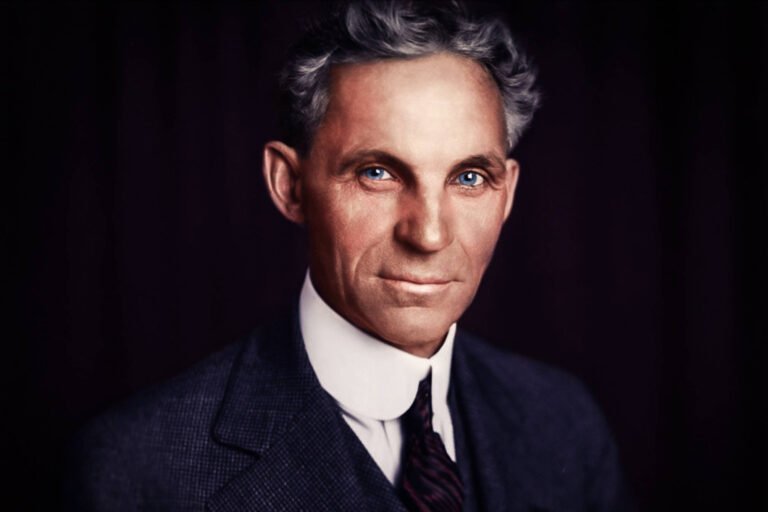
Was Henry Ford A Nazi? – Mythbusting Berlin
US auto tycoon, Henry Ford, holds the ignominious distinction of being the only American Adolf Hitler praised by name in his National Socialist manifesto: ‘Mein Kampf’. This was not, as it turns out, the only connection between Ford and the Party of Hitler, Himmler, and the Holocaust.
Ford’s overt affinity with the Third Reich reveals a troubling past. How deep these connections ran, and how consequential they were for both sides, is a chapter



